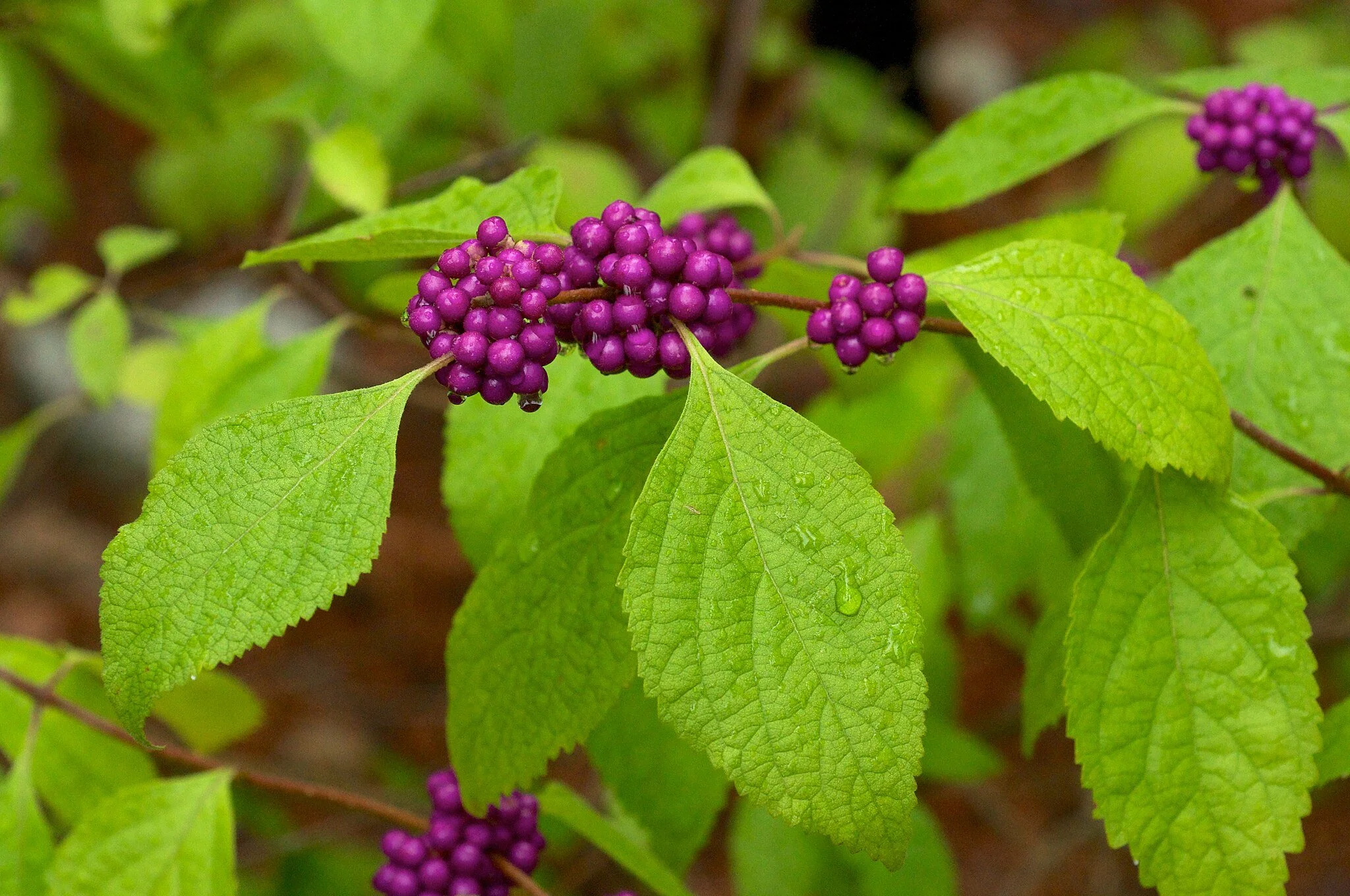Photo: American Beautyberry, Eric Hunt, CC BY-SA 3.0, via Wikimedia Commons
Julie Udani
It’s a beautiful plant - evergreen, red berries, soft foliage - but evil lurks in its heart. Nandina, a.k.a. Heavenly Bamboo or Nandina domestica, is a woody shrub native to Asia. It is not a true bamboo but, just like its namesake, it is a real problem in the landscape.
Nandina, Emőke Dénes, CC BY-SA 2.5, via Wikimedia Commons
Nandina is invasive in Virginia. But that’s not the worst part. Those pretty Nandina berries are poisonous to birds. In 2009 the University of Georgia College of Veterinary Medicine was asked to investigate the deaths of a flock of cedar waxwings that had been found in a backyard in Thomas County. The laboratory examined the birds and discovered that they had died of cyanide poisoning from eating Nandina fruit. The berries can contain cyanogenic compounds. Because cedar waxwings often eat large quantities of berries at a time, the Nandina is particularly deadly for them; but any hungry bird is vulnerable. Nandina is also toxic to dogs, cats, and other small animals.
Let’s take advantage of the season and use the berries and branches in our holiday decor. The fact that this requires removing the berries - or even the whole shrub - is a bonus. (You’ll need to dig the rest of it out when the soil softens in the spring because they can resprout from the roots.)
Winterberry Holly (Ilex verticillata)Paul R. Burley, CC0, via Wikimedia Commons
American Beautyberry (Callicarpa americana), Eric Hunt, CC BY-SA 3.0, via Wikimedia Commons
If you planted Nandina for the berries and are now feeling bitterly betrayed, there are several native alternatives. For example: Winterberry Holly (Ilex verticillata). It isn’t evergreen but it is spectacular when it drops its leaves and the generous clusters of red berries remain. The fruits can persist quite late before the birds eat them. That means more color for you in your landscape and a source of food for the birds at a time in winter when there isn’t much else available. Note that hollies are usually dioecious - that means plants are either male or female. Only the females produce berries but to get the berries you need to plant at least one male. Or switch to purple berries and plant Beautyberry (Callicarpa americana) which is absolutely gorgeous in a fall border planted with goldenrods and asters.
Inkberry (Ilex glabra), vastateparksstaff, CC BY 2.0, via Wikimedia Commons
Doghobble (Leucothoe fontanaisiana), KENPEI, CC BY-SA 3.0, via Wikimedia Commons
For an evergreen Nandina replacement, there are dwarf cultivars of Yaupon Holly (Ilex vomitoria ‘Bordeaux’ or ‘Nana’) that can give you red berries and evergreen foliage in a sunny spot. For shade, swap it for Inkberry (Ilex glabra) or Doghobble (Leucothoe fontanaisiana). If you liked the soft texture of the bamboo-like foliage, look to Coastal Doghobble (Leucothoe axillaris) for a taller swap, or one of our native evergreen ferns for something shorter. Christmas Fern (Polystichum acrostichoides) and Wood Fern (Dryopteris marginalis) are evergreen and do just fine in regular garden soil. All of these options - except the Beautyberry - are also deer resistant.
So lose the evil Nandina. Cut it down - it makes a great holiday wreath. Just don’t put it where pets or children might eat the berries.
Catch up on past Wildlife Sanctuary Almanac articles here.





